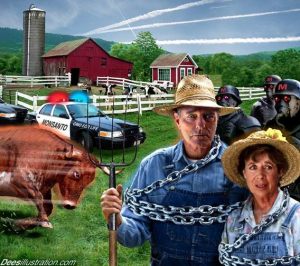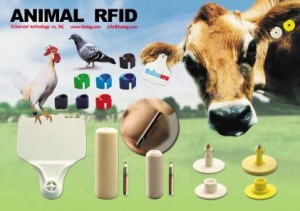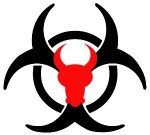USDA Doesn’t Respond, or Responds Inadequately, to Specific Questions
About Agency’s Authority to Require Premises Registration
Billings, Mont. — As promised, R-CALF USA has launched a 12-day blitz of news releases to explain in detail many of the reasons our members oppose the U.S. Department of Agriculture’s (USDA’s) National Animal Identification System (NAIS).
With this effort, R-CALF USA hopes to bring to light many of the dangerous aspects associated with NAIS with regard to invasion-of-privacy issues, the likely acceleration of the ongoing exodus of U.S. cattle producers from the industry, as well as other concerns we believe USDA has not even begun to ponder. Click here to view the entire 13-pages of formal comments R-CALF USA submitted to the agency on Aug. 3, 2009, to, yet again, oppose the implementation of NAIS.
In the fifth installment of our NAIS Opposition Blitz, we inform readers that on Dec. 5, 2008, R-CALF USA sent USDA 10 specific written questions concerning the agency’s authority to require the registration of “premises” for each U.S. cattle producer and the ramifications therefrom. (Visit http://www.r-calfusa.com/animal_id/081204-RCALFLetterToUSDAReNAIS&PremisesRegistration.pdf to see this letter to USDA.)
The agency did not respond to several of those questions and did not respond adequately to the few questions it did address in subsequent communications to R-CALF USA (Visit http://www.r-calfusa.com/animal_id/081204-RCALFLetterToUSDAReNAIS&PremisesRegistration.pdf to see the agency’s response.)
Because U.S. cattle producers deserve to know the exact source of authority that USDA claims to have to implement NAIS, as well as the full ramifications of the NAIS program itself, R-CALF USA again requests that USDA provide a detailed response to each of the following questions:
1. What is the specific authority that grants USDA the power to register personal real property as a premises without prior consent, power of attorney in fact, or by persons lacking legal age or capacity?
2. Does registration of real property as a premises become a permanent assignment to the affected property?
3. Does registration of real property as a premises constitute a burden or encumbrance on the affected property?
4. Does registration of real property as a premises alter, impair, diminish, divest, or destroy allodial title of land patentees, or heirs or assigns?
5. Does registration of real property as a premises constitute a taking as defined in the 5th Amendment to the U.S. Constitution?
6. Will those affected by premises registration of real property be compensated for any taking, in what amount, by what standard of evaluation, and what frequency?
7. Does an agency memorandum, on premises registration of real property, stand as an act of law?
8. Where, by an Act of Congress as legislated within the bounds of Article I, Section 8 of the U.S. Constitution, has USDA been given authority to register real property as a premises or otherwise implement the National Animal Identification System?
9. Where in the U.S. Constitution is USDA given authority to register real property as a premises or otherwise implement the National Animal Identification System?
10. Will future land title and use of private real property be impacted by implementation of the National Animal Identification System, resulting in further Federal regulation or authority?
# # #
R-CALF USA (Ranchers-Cattlemen Action Legal Fund, United Stockgrowers of America) is a national, non-profit organization dedicated to ensuring the continued profitability and viability of the U.S. cattle industry. R-CALF USA represents thousands of U.S. cattle producers on trade and marketin! g issues. Members are located across 47 states and are primarily cow/calf operators, cattle backgrounders, and/or feedlot owners. R-CALF USA directors and committee chairs are extremely active unpaid volunteers. R-CALF USA has dozens of affiliate organizations and various main-street businesses are associate members. For more information, visit www.r-calfusa.com or, call 406-252-2516.

 Mr. Hentges is a 1992 graduate of the University of Texas with a juris doctorate from the School of Law and a Master of Public Affairs from the Lyndon B. Johnson School of Public Affairs. He is a 1987 graduate of Oklahoma State University with a bachelor of science in agricultural economics.
Mr. Hentges is a 1992 graduate of the University of Texas with a juris doctorate from the School of Law and a Master of Public Affairs from the Lyndon B. Johnson School of Public Affairs. He is a 1987 graduate of Oklahoma State University with a bachelor of science in agricultural economics. A decision by U.S. District Judge Rosemary Collyer, located in the Washington District of Criminals, throwing out a lawsuit brought by Farm to Consumer Legal Defense Fund (FCLDF)
A decision by U.S. District Judge Rosemary Collyer, located in the Washington District of Criminals, throwing out a lawsuit brought by Farm to Consumer Legal Defense Fund (FCLDF) 



 One of the strongest speakers,
One of the strongest speakers,  The USDA has a
The USDA has a